Research & Development Center
YANMAR Technical Review
Utilization of Waste Heat from Hot Water: Desiccant Technology
Abstract
In keeping with its brand statement of “A Sustainable Future”, Yanmar has developed a unique small-sized desiccant dehumidifier that also provides a way to create value from waste heat.
Looking beyond the air conditioning market, two units of a prototype were installed at a typical greenhouse in Japan to evaluate the potential for the system in agriculture. Over two years of operation, the desiccant system demonstrated its ability to prevent excessive humidity, a cause of various crop diseases.
This article describes the basic theory of desiccant dehumidifiers, the development process, and the results from experimental greenhouse testing of the prototype.
1. Introduction
In keeping with its brand statement of “A Sustainable Future”, Yanmar is taking steps to tackle global warming that include the development of techniques for utilizing the large amounts of waste heat available, as shown in Fig. 1.
Unfortunately, progress to date on utilizing waste heat cannot be said to be going well. The reasons for this include that it is mainly available in low-quality form (200°C or less) where the efficiency of conversion to motive power or heating and cooling is low, making it difficult to achieve economic viability.
To change this situation, Yanmar is working on ways to generate added value from low-quality waste heat. This article describes one such example, in which a desiccant is used in a heat-driven humidity control system, and presents an example of its commercial application.
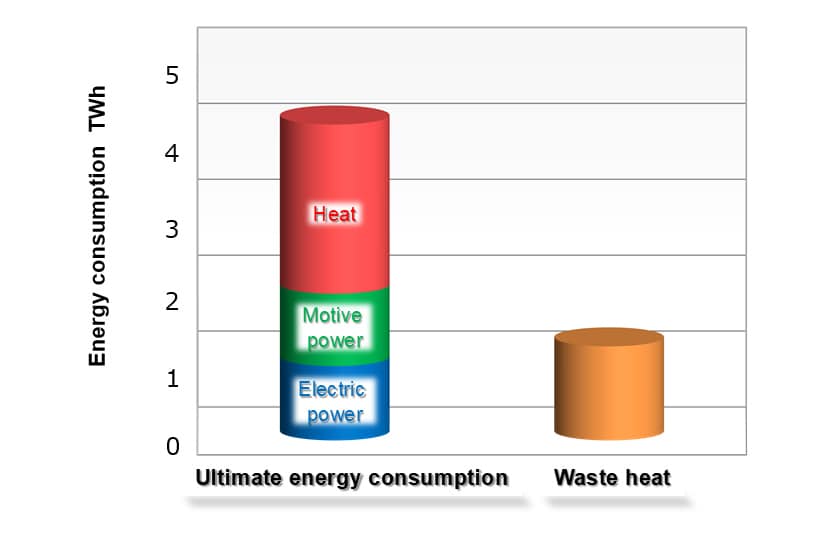
2. Principles and Features of Desiccant Dehumidifier
2.1. Principle of Operation
While past systems of this type have taken a variety of forms, what they all have in common is that they dehumidify air by using a desiccant such as silica gel or zeolite with a high level of moisture adsorption (or absorption) capacity to adsorb (or absorb) moisture, and by using heat to remove the moisture. Fig. 2 shows an example of a typical system that uses a desiccant rotor.
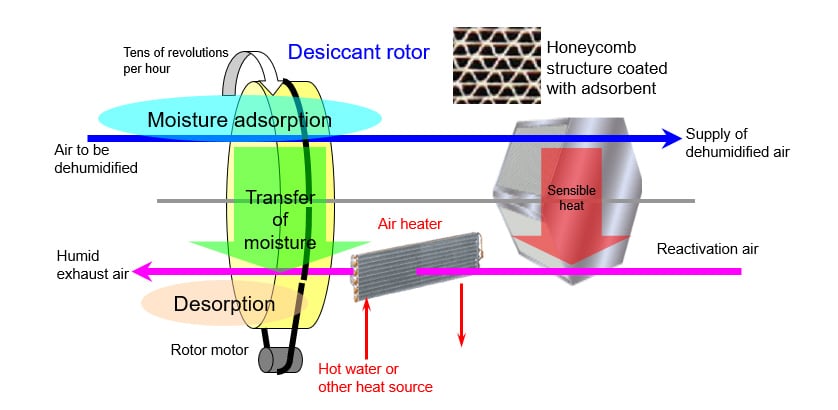
Materials used as desiccants, such as silica gel or zeolite, have a high surface area per unit volume and a high capacity to adsorb moisture. As shown in Fig. 3, the relationship between the relative humidity of the air and the saturated adsorbed moisture able to be adsorbed (what is known as the "adsorption isotherm") varies from material to material. Accordingly, the choice of which material to use must be made based on factors such as the extent to which the air needs to be dehumidified and the heating temperature of the reactivation air. In recent years high-performance desiccants with large changes in the saturated amount of moisture able to be adsorbed for changes in relative humidity are in practical use, providing a boost to the development of systems with features that have not previously been available.
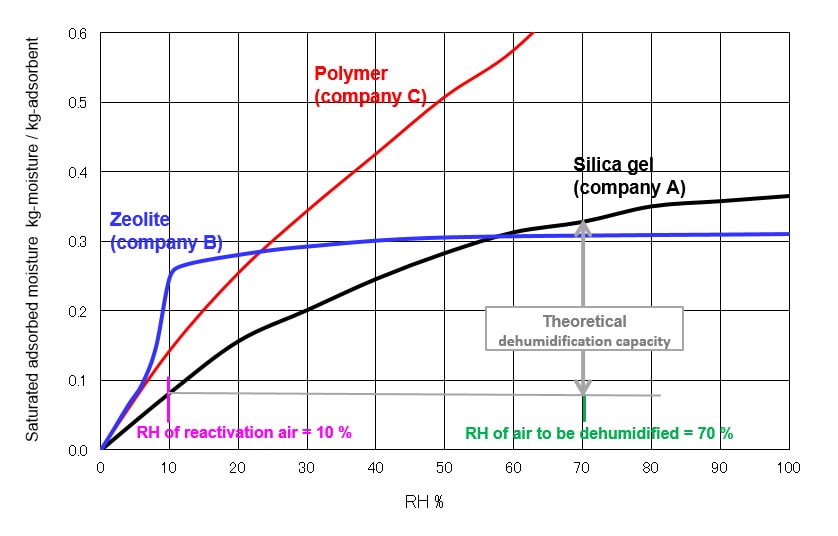
2.2. Features
The desiccant dehumidifier is widely used for living spaces and semiconductor, pharmaceutical, or other factories, and it provides the following features comparing to the refrigeration dehumidifier using by a compressor.
(1) Heat-driven system
The desiccant dehumidifier works by adsorbing (or absorbing) moisture into the desiccant through which the air is passed, and desorbing (reactivating) with heating the desiccant to dry it. This means it does not consume any electric power other than for fans and other equipment. Waste heat from hot water can also be used as the heat source for reactivation air
(2) Ability to dehumidify at low dew point and low air temperature
Because the condensation of the water vapor is not required, a deep dehumidification at a dew point below 0 °C is possible. No restriction by the freezing of condensed water leads little degradation in dehumidification performance even when the temperature of the air being dehumidified is low. This allows use in cold climates.
(3) No risk of mold or bacteria
By eliminating dampness due to condensed water, the risk of mold or bacteria growth is avoided. This makes the desiccant dehumidifier suitable for use in hospitals, rest homes, and educational facilities.
Meanwhile, the large size of the equipment requires large installation spaces and introduction costs. However the developments of small and high performance systems that use new desiccants and operate in combination with a compressor heat pump are progressed. Such systems are entering commercial use in Japan.
3. Development of Small and Highly Efficient Desiccant Dehumidifier
A prototype, which realizes a small desiccant dehumidifier that has a sufficient dehumidification performance using low-quality heat (approximately 60 °C), such as the hot water produced by solar energy or discharged from gas engine heat pumps (GHP) or micro co-generation systems, was designed and developed. Two dehumidification regions are provided in a horizontally mounted desiccant rotor to perform two-stage dehumidification of the air. This has resulted in a system that works with water at approximately 60 °C and has a dehumidification performance that is approximately 40 % better than the conventional configuration shown in Fig. 2. The design work included a simulation of the moisture adsorption and desorption processes that was used to optimize parameters such as the size, region partitioning, and rotating speed of the rotor.
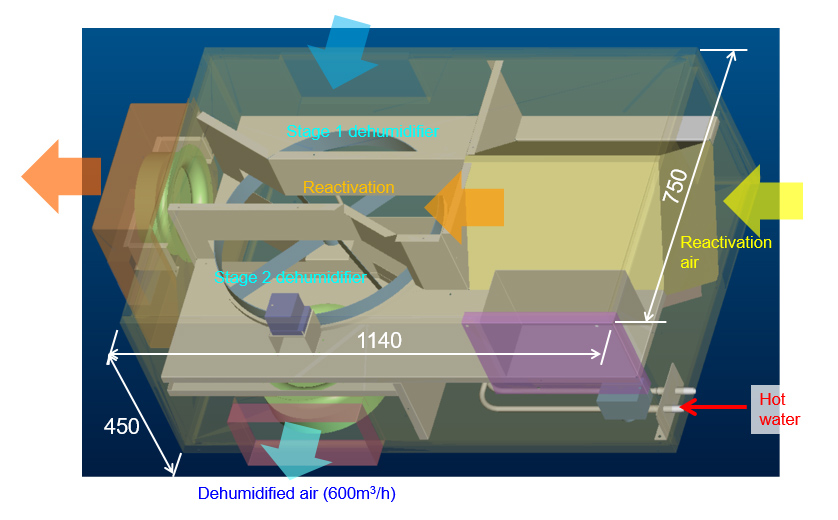
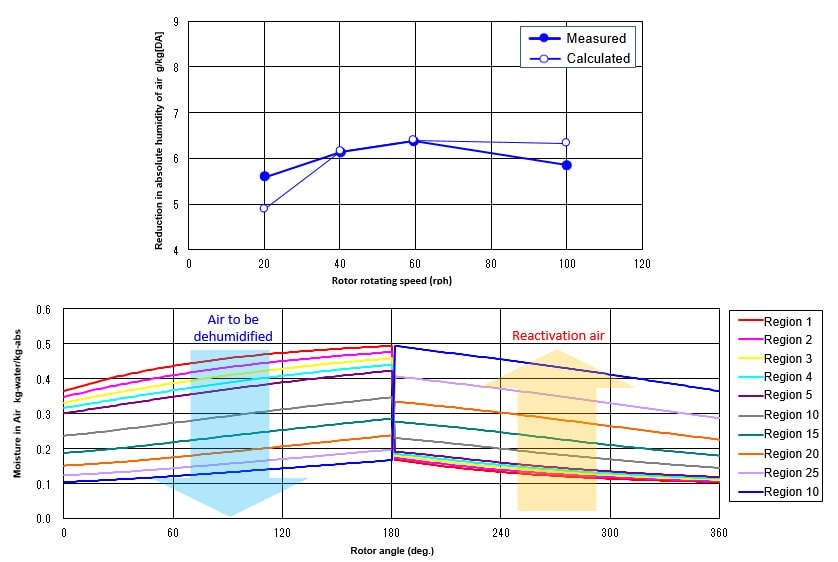
4. Example Application
In the large market of general air conditioners, cost requirements are very tough. Moreover, the hot water waste heat driven system requires the associated plumbing and this creates challenges for installation work in the Japanese market where distributed air conditioning that uses direct expansion of the refrigerant is common. Accordingly, with the aim of researching ways of using waste heat that have high added value, the conformity evaluation was conducted in the greenhouse horticulture sector with which Yanmar has a close relationship.
In practice, this involved installing two units of the prototype in an experimental greenhouse with a floor area of 500 square meters and operating them for a two-year trial during which they performed humidity control using a supply of hot water at 55 °C. Because the greenhouse, which grew tomatoes, had a problem with mold diseases caused mainly by night-time increases in relative humidity and condensation, the objective was to keep relative humidity at or below 80 %. The total capacity of the desiccant dehumidifier is such that it can process the entire greenhouse volume of air in approximately two hours. The energy consumption for hot water is 2 to 3 kW per unit, and because the required water temperature is low it can be supplied from a source such as a solar water heater.
Adjacent to the greenhouse where the prototype was installed was another greenhouse of the same size that also grew tomatoes. In place of a desiccant dehumidifier, it was fitted with a humidity control system with a total heat exchanger. This provided a basis for comparison.
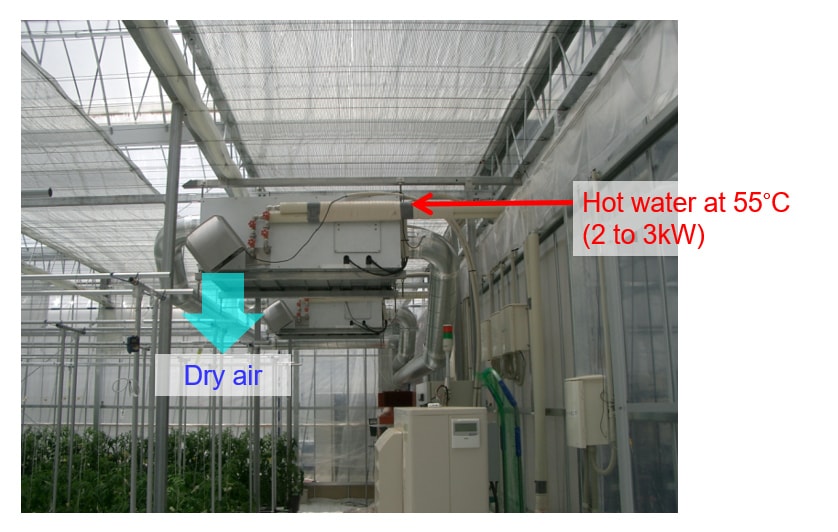
Fig. 7 shows the trend in relative humidity in the greenhouse over a three-day period during summer together with data from the greenhouse where the desiccant system was not installed. Whereas the relative humidity rose to close to 100 % for most of the time during the night in the greenhouse without the desiccant system, the desiccant system kept the relative humidity in its greenhouse at approximately 80 % even at sunrise and sunset, the time periods with the greatest risk of humidity increase. Thanks to its ability to provide a high level of dehumidification even at low temperatures, using a desiccant to prevent humidity rise works all year round, even in winter.
The results of this trial demonstrated a 20% improvement in crop yield, with almost no instances of mold disease in the greenhouse where the desiccant system was installed, whereas crop damage due to mold disease did occur in the greenhouse where the desiccant system was not installed.
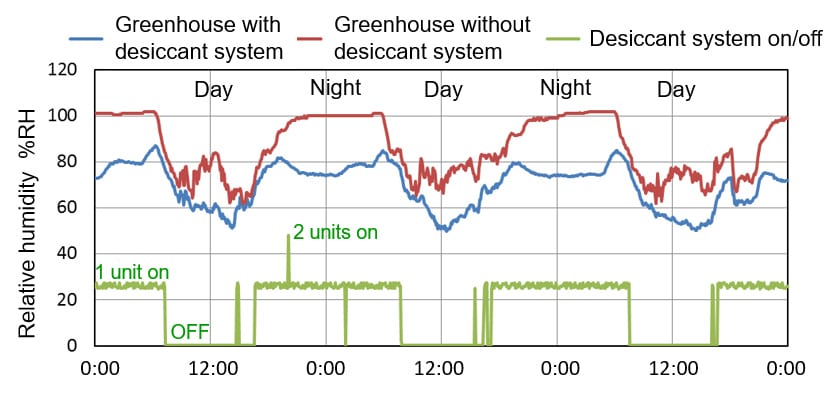
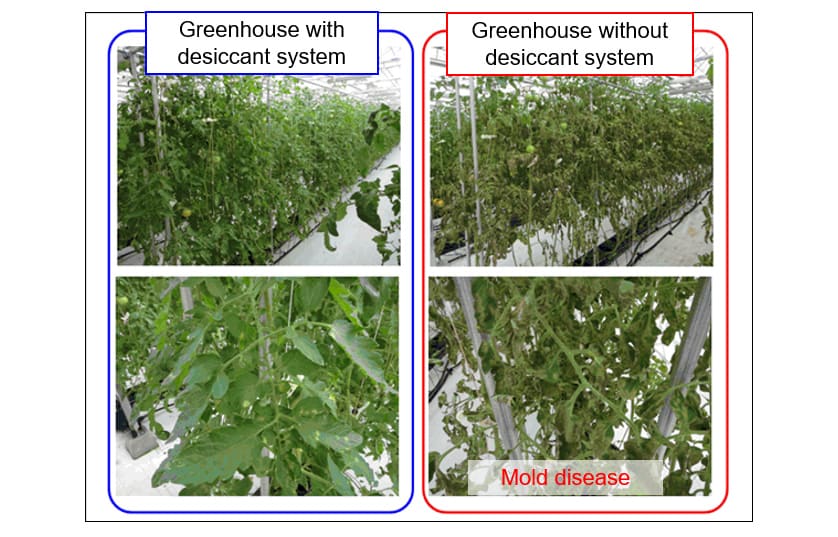
5. Conclusions
Yanmar has developed a hot water driven desiccant dehumidifier as a way to utilize low-quality waste heat. The system demonstrated excellent dehumidification performance in a greenhouse and shows the potential to improve both crop yield and quality. Along with this technique, Yanmar intends to continue with the research and development of other new systems with the aim of finding high-added-value uses for waste heat so as to achieve its goal of “A Sustainable Future” and to contribute to a society that looks to the future and a more prosperous way of life.
-IMPORTANT-
The original technical report is written in Japanese.
This document was translated by Research & Development Management Division.
Author
